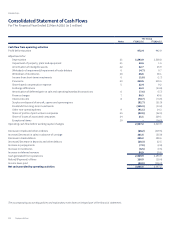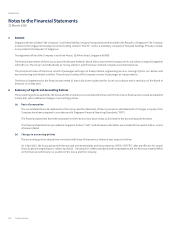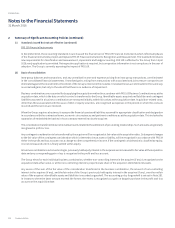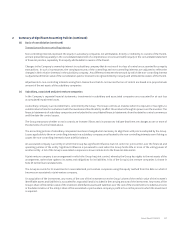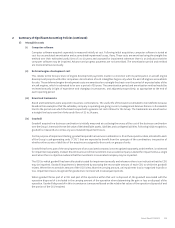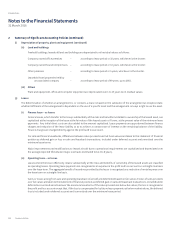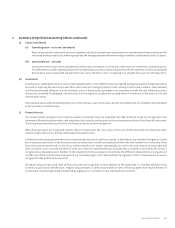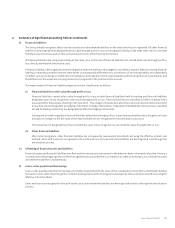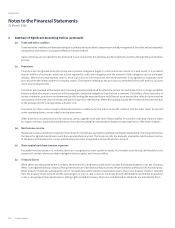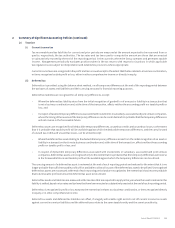Singapore Airlines 2016 Annual Report Download - page 121
Download and view the complete annual report
Please find page 121 of the 2016 Singapore Airlines annual report below. You can navigate through the pages in the report by either clicking on the pages listed below, or by using the keyword search tool below to find specific information within the annual report.2 Summary of Significant Accounting Policies (continued)
(f) Intangible assets
(i) Computer soware
Computer soware acquired separately is measured initially at cost. Following initial acquisition, computer soware is stated at
cost less accumulated amortisation and accumulated impairment losses, if any. These costs are amortised using the straight-line
method over their estimated useful lives of 3 to 10 years and assessed for impairment whenever there is an indication that the
computer soware may be impaired. Advance and progress payments are not amortised. The amortisation period and method
are reviewed at least annually.
(ii) Deferred engine development cost
This relates to the Group’s share of engine development payments made in connection with its participation in aircra engine
development projects with other companies. Amortisation of such intangibles begins only when the aircra engines are available
for sale. These deferred engine development costs are amortised on a straight-line basis over the period of expected sales of the
aircra engines, which is estimated to be over a period of 20 years. The amortisation period and amortisation method would be
reviewed annually in light of experience and changing circumstances, and adjusted prospectively, as appropriate at the end of
each reporting period.
(iii) Brand and trademarks
Brand and trademarks were acquired in business combinations. The useful life of the brand is estimated to be indefinite because
based on the assumption that the subsidiary company is operating as a going concern, management believes there is no foreseeable
limit to the period over which the brand is expected to generate net cash inflows for the Group. The trademarks are amortised on
a straight line basis over their finite useful lives of 23 to 24 years.
(iv) Goodwill
Goodwill acquired in a business combination is initially measured at cost being the excess of the cost of the business combination
over the Group’s interest in the net fair value of the identifiable assets, liabilities and contingent liabilities. Following initial recognition,
goodwill is measured at cost less any accumulated impairment losses.
For the purpose of impairment testing, goodwill acquired in a business combination is, from the acquisition date, allocated to each
of the Group’s cash-generating units (“CGU”) that are expected to benefit from the synergies of the combination, irrespective of
whether other assets or liabilities of the acquiree are assigned to those units or groups of units.
Goodwill that forms part of the carrying amount of an associated company is not recognised separately, and therefore, is not tested
for impairment separately. Instead, the entire amount of the investment in associated company is tested for impairment as a single
asset when there is objective evidence that the investment in associated company may be impacted.
The CGU to which goodwill has been allocated is tested for impairment annually and whenever there is an indication that the CGU
may be impaired. Goodwill impairment is determined by assessing the recoverable amount of each CGU to which the goodwill
relates. Where the recoverable amount of the CGU is less than the carrying amount, an impairment loss is recognised in profit or
loss. Impairment losses recognised for goodwill are not reversed in subsequent periods.
Where goodwill forms part of a CGU and part of the operation within that unit is disposed of, the goodwill associated with the
operation disposed of is included in the carrying amount of the operation when determining the gain or loss on disposal of the
operation. Goodwill disposed of in this circumstance is measured based on the relative fair values of the operation disposed of and
the portion of the CGU retained.
Annual Report FY2015/16 119





